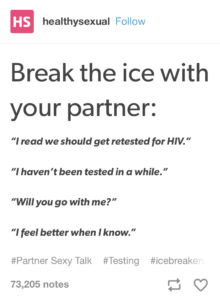How Content Bridges the Marketing Gap
Chances are you already know that content marketing is important to reach the people that matter to your brand. Even more importantly, content marketing can help patients know that a treatment exists while giving them the opportunity to connect with each other in social platforms. This enables people to do something that no other part of the healthcare system provides: understanding what good health outcomes look like and how to get there.
Content marketing is increasingly significant as today’s consumers are actively avoiding ads. In just the next 24 months, the US will have more than 270 million video-on-demand subscribers: people who are willing to pay a monthly fee to watch.[i] This year alone, eMarketer estimates that more than one quarter of the country’s online users will be using ad blockers, growing at an annual rate of 16.2%.[ii] If that didn’t underscore the need for content marketing, consider that nearly half of all millennials online are currently skipping and blocking ads.
As brand marketers adjust to develop a content strategy that adapts to these consumer trends, they’re finding the world is fractured and complex. Gaining clarity of decision-making seems virtually impossible. The people important to your brand are practically anywhere. Social platforms are selling more conventional ads, but they only deliver metrics like ads and do not provide sharable content.
After a few years of analyzing how content performs through millions of engagements, we’ve seen some patterns emerge for how to create strategies that out-deliver most every other marketing method. And they’re more pragmatic than you think.
Connecting Advertising with Relationship Management
Advertising campaigns across mass media platforms are excellent methods to get the right people aware of your message in large numbers. They literally make a person aware of what the medication is, why a person might need it, and the aspirational moment of successful treatment. Anyone who says these ways of reaching audiences at scale don’t work is simply wrong.
The other widely used method to reach audiences is CRM (customer relationship management). When someone is ready to consider specific treatments, CRM can offer that person more specific information about the medicine and lead to some incredible ambassador programs for those actively on treatment.
But there’s a wide gulf between advertising methods and CRM. I like to call it the “cut to” of static marketing. When investing in just advertising and relationship management kinds of messaging, it’s as though the brand is saying that once the marketer concludes that you’re aware of the medication, then just cut to relationship management.
We know there are a lot of actions that must take place between the moment a person sees an ad and the time they become part of a relationship management stream. Content marketing provides a series of ways to help people get from one to the other.
Getting from Awareness to Relationship
Think about someone who has seen an ad that really resonates with them. They immediately identify with the story and the value proposition. Now what? How do they know what to do the next morning, the conversation to have with a partner, a family member, or a doctor? How do they know the steps to take so they can achieve the aspirational moment they have seen in your ad?
Or, say they understand the ad, but they are not motivated to take action because the reason a person seeks treatment in the ad to which they were exposed is not the same motivating factor that will drive them to take a specific action.
 Content can offer a range of highly specific options for people so that taking action is as easy as possible, even when they have low motivation. One example is this post from the HealthySexual campaign. In an ad, from the perspective of the campaign, it only makes sense to say, “Talk to your partner about your history.” But as content, it is important to be highly specific to the behavior that must take place.[iii] People will find that approach far more valuable, using the content to take action, represent their own ideals, and enable generations of sharing.
Content can offer a range of highly specific options for people so that taking action is as easy as possible, even when they have low motivation. One example is this post from the HealthySexual campaign. In an ad, from the perspective of the campaign, it only makes sense to say, “Talk to your partner about your history.” But as content, it is important to be highly specific to the behavior that must take place.[iii] People will find that approach far more valuable, using the content to take action, represent their own ideals, and enable generations of sharing.
Putting this content on to social platforms sparks people to comment with a wide range of perspectives, any one of which could be the “ah-hah” moment for a patient. At this point, content plus paid media has exposed your audience to something better than any single ad. It is presenting them with an array of specific actions that offer a practical “way in” provided by someone just like them.
On the relationship management side you can make content that takes time into account and helps to prompt a specific action, like relationship management, where you can specifically prompt a patient at the beginning of the day to put their medicine in their backpack, then at mealtime promote a post that reminds them to take the medicine.
 In this sense, yes, content marketing efforts should overlap between advertising and relationship marketing. It’s also the easiest way of thinking about budgeting for content marketing. When someone becomes aware of a brand’s treatment, content marketing is there to help them understand how and why to take actions that help them. Then, as they are able to use that content to get closer to treatment, they are motivated and ready to join a relationship management program on their own terms.
In this sense, yes, content marketing efforts should overlap between advertising and relationship marketing. It’s also the easiest way of thinking about budgeting for content marketing. When someone becomes aware of a brand’s treatment, content marketing is there to help them understand how and why to take actions that help them. Then, as they are able to use that content to get closer to treatment, they are motivated and ready to join a relationship management program on their own terms.
So when you’re faced with the inevitable “do more with less” budget, content marketing should be an investment that comes from both existing advertising and CRM budgets. The good news is that both advertising and CRM will see dramatically increased performance, but with some key differences.
Driving Performance with Trust
It’s not always immediately obvious where the media efficiency lies in content marketing, especially if you’re placing ads on social platforms like Facebook lite and Twitter handleless ads. These are ad vehicles and not content vehicles. You will be able to compare them more directly to the way you are measuring advertising, and that’s it.
When you make the transition to investing in content that uses paid media rather than ads, shares will result. Those shares will drive media efficiency. In social channels, your audience doubles as both consumer of the content and the working media distributing the content, so the efficiency will come through the distribution and not only in the initial investment.
What’s best – and most difficult to measure in this case – is also the most treasured: trust. When a person uses the brand’s content to represent the way they feel about a topic, it’s not to a group of strangers. Every person in a social network represents new networks of people with whom they have some degree of credibility and trust. These kinds of connections and value shared between people can’t be bought or imitated by a company. Companies can only use paid media to introduce people to content they wouldn’t ordinarily have been exposed to.
You won’t see this widely written because when it’s done right, the results are significant and impact the way the brand is managed. I can say that in some cases, we’ve seen 50% return on investment on paid media spend and decreases in earned cost per engagement (eCPE) of 30%. What makes it difficult as a business case is that you won’t be able to know the true cost savings until you have calibrated spend, targeting, and content: exactly what pilot budgets are for.
On the CRM side, content marketing delivers far more qualified people, at a far higher rate, at much lower cost. One example is a social adherence program that reduced cost-per-touch by 90% when compared to the CRM stream itself, and 8 out of 10 patients surveyed said they were more adherent after they followed the campaign on that platform. In one case, content outperformed driving new CRM signups 76 to 1 over other digital advertising.
Change is never easy, especially when ads have largely worked the same way and been measured the same way for decades. But content is closer to both ads and relationship management than most people give it credit for. In fact, the great thing about effective content is that it’s the best of both.
Good content inspires people as they become aware of a treatment or a method to get to better health outcomes when they may not have many answers. But through storytelling with specific, behavioral actions as the foundation to content marketing, you are using your brand to help people find out how to take the steps they need to gain healthy solutions and relationships for life.
References
[i] Feldman, D. Forbes. Netflix Remains Ahead Of Amazon And Hulu With 128M Viewers Expected This Year. https://www.forbes.com/sites/danafeldman/2017/04/13/netflix-remains-ahead-of-amazon-and-hulu-with-128m-viewers-expected-this-year/#207b62ac216c
[ii] eMarketer Scales Back Estimates of Ad Blocking in the US. https://www.emarketer.com/Article/eMarketer-Scales-Back-Estimates-of-Ad-Blocking-US/1015243
[iii] HealthySexual Tumblr. http://healthysexual.tumblr.com/post/154767314982/break-the-ice-with-your-partner

